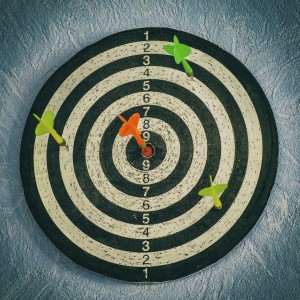Even though e-commerce continues to disappoint as a share of all retail (less than 8% as of Q1 2015), the influence of digital on sales is skyrocketing. As of September, half of retail sales were influenced by digital and that trend is expected to continue. No longer looking to the web to take away the inconvenience of physical transactions, consumers are discovering new products, researching them, and making purchase decisions before they walk into the store.
 Other forces shaping retail: changing attitudes about privacy and loyalty. Close to half of consumers prefer relevancy of targeted information over preserving their privacy. As for loyalty programs, a quarter of consumers seek service and access to exclusive items over discounts and free items.
Other forces shaping retail: changing attitudes about privacy and loyalty. Close to half of consumers prefer relevancy of targeted information over preserving their privacy. As for loyalty programs, a quarter of consumers seek service and access to exclusive items over discounts and free items.
Given the forces that are shaping retail, here are five areas retailers should focus on in the next five years.
Content & Commerce: In 2014, L2 scored 34 brands on how they integrate content with their eCommerce page and found a strong positive correlation between their content score and estimated conversion rate.
It simply isn’t enough for brands to invest in creating content; content must either drive conversion or contribute to brand loyalty as a whole. Much of branded content is misplaced and siloed away from products for sale, thus not contributing to either.
Content must be integrated with commerce to make an impact. Too many brand investments sit on a microsite, which results in fewer views than the investment deserves.
The most effective examples of branded content are featured prominently on home and product pages, and drive users to purchase with shoppable lookbooks.
Branded content requires investment, but sometimes it’s a matter of harnessing the power of content that already exists. Consumers who see user-generated content on the path to purchase have a 4.6% higher conversion rate than those who don’t.
Personalization: Thirty-three percent of marketers say personalization of information and relevance is their primary focus in 2015. Brands face the difficult decision of how much data is too much, as requiring consumers to fill out more than a certain number of fields can raise drop-off levels.
But more often than not, brands fail to use the consumer data they already have. Recently viewed products and sizing information can be gathered from browsing history without the need for additional input. Yet, Neiman Marcus fails to display recently viewed products and leverage that information for cross-selling.
Best examples of personalization: Kate Spade displays the closest store on the site based on the customer’s profile. Very.co.uk customizes homepages based on an individual’s browsing profile, targeting them with items they are most likely to buy. Clinique recommends products based on the results of a skin diagnostic test.
Customer Service: As more retailers are adopting standard live chat, those who can customize and speed up the service experience will differentiate themselves. The best examples of live chat don’t just ask consumers for help, they guide them to a specific topic. For example, the Apple help box asks consumers if they need help with a product they own, an order they placed, or if they need to discover the right product for their needs. Estée Lauder’s pop-up chat box contains a message relevant to what the consumer is browsing.
Loyalty: The top loyalty programs don’t rely on discounting to build a fan base. Nordstrom and The North Face offer experiences to their VIP members. Neiman Marcus offers wardrobe consultations, American Airlines offers priority boarding, and Nike offers run clubs.
The best loyalty programs also offer convenience to all members. Sephora’s Beauty Insider– one of the best examples of loyalty programs – enables users to save loves and purchases on their phone. Sample, online, and in-store purchase histories are stored in the beauty bag, which is retrievable across all channels.
Starbucks – also a leader in loyalty – customizes its program by country. U.S. members gain convenience, as they can pre-pay for their drink and pickup in store. China consumers are offered coupons via games.
Omnichannel: Even though many brands have implemented tactics to drive consumers to the store or complete a purchase online, few have achieved balance. Saks, Walgreens, Walmart and Guess are Omnichannel leaders according to L2’s scoring system, which rates brands on how they encourage omnichannel behavior on their site, mobile presence, and email.
Mobile browsing is becoming a preliminary step to visiting the store as over half of consumers who search locally on their smartphone visit a store within 24-hours of their local search. Yet, because of the cumbersome mobile checkout processes mobile commerce has yet to take off.
Brands are working to remove the friction of that last step. Apple enables one-touch pay and exhibits live stock status on its mobile page. Nordstrom has build single-page checkout on mobile, but requires users to enter shipping, payment, and identity information and save in between each step.
Others continue to build out their in-store drivers. Tag Heuer offers click-to-call for appointment scheduling. Home Depot provides in-store availability down to the aisle and shelf. And John Lewis has partnered with Waitrose grocery stores to enable users to pick up their items while grocery shopping.
For more on which brands are thriving and dying in a digital age, see L2’s studies onLoyalty,Targeting, Omnichannel, and Content & Commerce.









